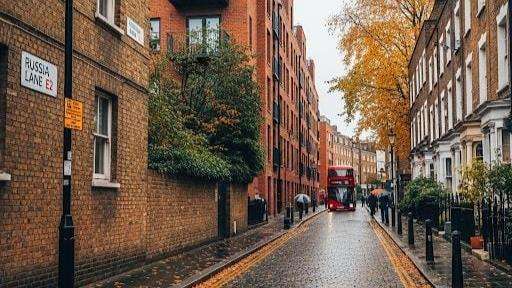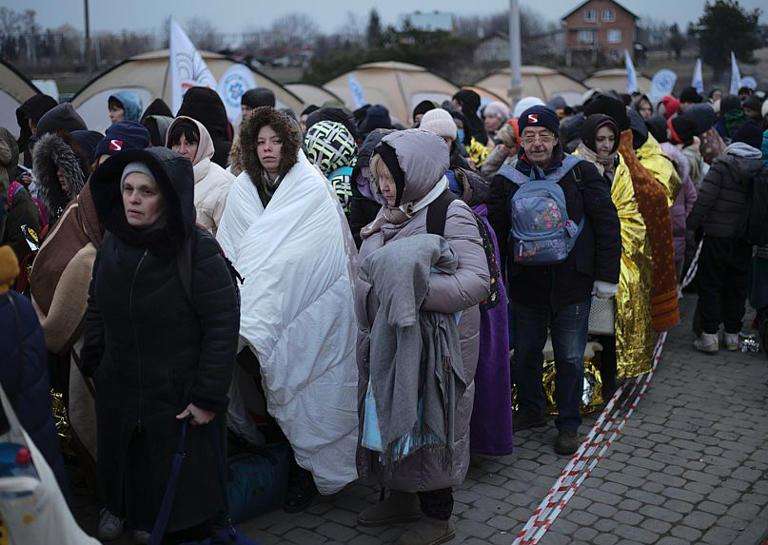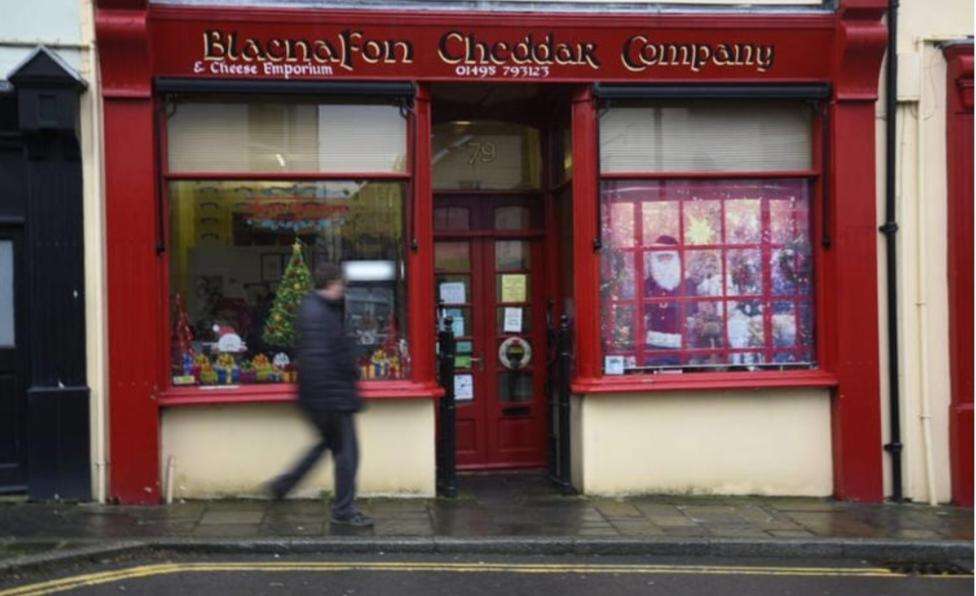Susan Fiander-Woodhouse has been aging her award-winning cheeses in an old mine next to her business for ten and a half years. Her desire to incorporate her town's history into the very fabric of her cheese led her to come up with the creative concept of using the historic Big Pit as a cheese-aging chamber.
"The miners discovered that the subsurface flavor of their meal altered during a 12-hour shift. So we thought it would be a good place to start and try some cheese ageing," recalled one of Wales' most renowned cheesemakers about her early days on the town's high street in Blaenavon, which residents feel hasn't yet flourished despite its potential for economic transformation and its designation as a World Heritage Site.
Gourmets from all over the world have been drawn to Susan's distinctive cheeses, but in 2021, National Museum Wales dealt her a blow when they told her that she could no longer age her cheese in the mine because of "difficult business decisions" and health and safety issues.
"I love Blaenavon," Susan told WalesOnline from her shop on Broad Street, which now seems a far cry from its portrayal at the heritage centre as a "busy commercial centre serving the needs of an industrial community". She says the town was "a Victorian masterpiece" noting its once-thriving and aesthetically pleasing character.
"We had shops for everything and the town was vibrant and beautiful. Everyone knew each other and it was an amazing place to grow up. Of course, the pits closed and the steelworks closed and the town began to die. When we got world heritage status in 2000 there was a lot of excitement, but it didn't bring the prosperity people thought it would. We thought it would bring lots of people into the town but it never really has."
Even the granting of world heritage status in 2000 didn't deliver the anticipated boost, though Big Pit, the former mine transformed into an impressive museum, draws about 100,000 visitors each year.
"It's all on the outside of the town though," points out Susan, articulating the disconnect between tourism and local benefit. "It's a shame because we are a registered attraction. We get visitors from all over the world and it's embarrassing sometimes because they say 'Is this what it's like to be a world heritage town?"
The once-thriving Blaenavon has seen its population plateau at about 6,000 since the 1990s following industrial decline, with hardly any major employers left apart from the Daniel Doncaster site. Most locals who have jobs travel out for work and often leave town over the weekends, says Nilesh Tank in his distinctive convenience store, a fixture where he's served the community and made his home for 14 years.
Tank, who relocated from Leicester seeking the tranquillity of country life, appreciates the warm community and verdant landscape: "The people are friendly here and it's pretty green. I like places like this more than big cities. Business is pretty slow. At the moment people are keeping their money very close and are focused on paying their energy bills. We're very quiet, especially in the days. If people want to shop they tend to go out of town."
He observes that business isn't bustling and pinpoints tight household budgets and prioritisation of essential expenses such as energy bills as the cause for the downturn.
His unique shop is among the numerous enduring local businesses that stand as tributes to the town's rich history, a poignant contrast to the sparse foot traffic even in the lead-up to Christmas.
Angela Lewis, a 72 year old resident of Blaenavon, has lived in the town her entire life, save for a four-year stint in Tunisia as a hotel representative following her husband's passing at 52. She nostalgically recalls: "When I was a child from the bottom of the town to the top there was nothing you couldn't buy. People didn't have cars then, we didn't have one. You had to do your shopping in Blaenavon because there was no other option. Sadly over the years the businesses are all gone and the people are gone and they've never been replaced. I think it was the supermarkets over in Brynmawr - out of town supermarkets."
She also reminisces about her time working in a factory that produced electronic components, where she spent 18 years. "I used to work in the factory for electronic components - worked there for 18 years. The factories would pay the workers on the Friday and everyone would come into the town on a Friday and weekends. But all those factories are gone now. There was plenty of opportunity back then but not anymore, and people moved away. Now I go into the doctor's to get my prescription and sometimes I don't know anyone. I used to know most people."
Susan has found an unconventional spot for aging her cheese: the cellar of the Lion Hotel just across the street, which, despite the gloomy weather, is hosting a few intrepid tourists. They're drawn by the local history and scenic walks, according to Susan.
Just a stone's throw away are natural treasures like Keeper's Pond and the Sugarloaf and Blorenge mountains, with the expanse of the Bannau Brycheiniog (Brecon Beacons) national park not much further.
"It's the clean air," Susan says, detailing the allure of the area. "It's a safe place with beautiful scenery. We've got a cottage and smallholding up the top of the mountain where we make a lot of our own produce ourselves. People often move here for cheap housing now."
Emma McGrath, who used to escape to Llangorse in the national park from her bustling life in Hastings, Sussex, whenever she needed respite, has been a regular visitor for years. After handing over her dry cleaning and laundry business to her son three years ago, she seized the opportunity to fulfill her dream of moving as close as possible to her slice of heaven.
"If money wasn't an object I'd be in Brecon or Crickhowell," she shares from her vibrant sewing shop, housed in what was once Robinson the Chemista contender for Blaenavon's oldest store, having been in the same family for a century. When Emma settled here in 2021, she discovered boxes of medicine dating back to the 1980s, a forgotten trove she later donated to the heritage centre.
"I didn't want a dingy shop space with a flat, I wanted a home," she declares. "Behind me and above me here is my home. Nature drew me to Wales, but it was the property that led me to Blaenavon. It's a beautiful old listed building that just needs some TLC. Look at the external rendering. Efforts have been made to modernise it, but it should have been left in its original state. This has happened throughout the town. But these are beautiful historic buildings. Coming from middle England, I think I perhaps notice more - the changes that have occurred and how they've been overlooked. I see the damage that's been inflicted here. But I don't think many locals do. They often seem oblivious, which I believe contributes to the issue. All of that hard work and pride has gradually eroded"
Emma considers herself lucky that her business isn't dependent on local foot traffic. She frequently receives garments for repair from her previous base in England, which keeps her afloat.
She also relocated here because she sees untapped potential in the town. "I think it could have a very promising future due to its location," she suggests. "It's situated along the M4 corridor, close to numerous green spaces, and housing here is relatively affordable."
Rightmove's figures indicate that the average house price in Blaenavon over the past year was a modest £156,841. The hottest properties on the market were terraced houses, which sold for an average of £121,498.
Meanwhile, semi-detached homes fetched around £187,000 on average. Emma highlighted the trend, saying: "When I was trying to buy here the estate agent told me young people from places like Abergavenny were buying their first homes here."
Blaenavon's mayor, Nathan Matthews, concurs with this view. He observes a demographic shift, noting: "What you are getting here now is some more people moving to the area. The way we work is changing and many people are now working from home for the majority of the week or perhaps all of the time. This is at a time where house prices are still very high across Wales but they are below average around here. That could revitalise Blaenavon and other towns across the Heads of the Valleys. It's well located - we're not in the back of beyond."
However, Health outcomes remain poor, and the region holds the record for the lowest healthy life expectancy in Wales. Data released by the Office for National Statistics (ONS) shows that babies born in 2021 to 2023 are expected to have the lowest healthy life expectancy in the nation, with men having an average of 54.9 years and women just 53.3 years of good health.
According to the Welsh Index of Multiple Deprivation, last updated in 2019, the most populated area of Blaenavon near the town centre ranked within the top 20% of the most deprived places in Wales, considering factors like income, employment, health, and education. The gap between the richest and poorest areas is also widening, as per the Office for National Statistics (ONS).
The data indicates that residents of Abergavenny in Monmouthshire can expect to enjoy at least a decade more of good health compared to those in Blaenavon.
"You can't get away from the socioeconomic challenges," Nathan remarks. "We don't have the foundations of a butcher or a greengrocer anymore which is a huge shame. But there are businesses that do well here such as the Lion Hotel. You go in there and it's incredible to see people from all over the world there."
He continues, highlighting local issues: "There are disadvantages within the community such as higher proportion of ill health and unemployment. There is a link there between poor health and poverty. Part of the focus there needs to be intervention at an early age to try and get young people surrounded by more opportunities in order for them to make good decisions to live healthier lives."
Nathan concludes with a note of cautious optimism: "There'll always be challenges and heritage can never be the panacea to all the town's problems. There are deep issues here as there are in towns across the valleys, but I think heritage has done the town a lot of good and will continue to do it a lot of good."








.svg)

.jpg)
.jpg)